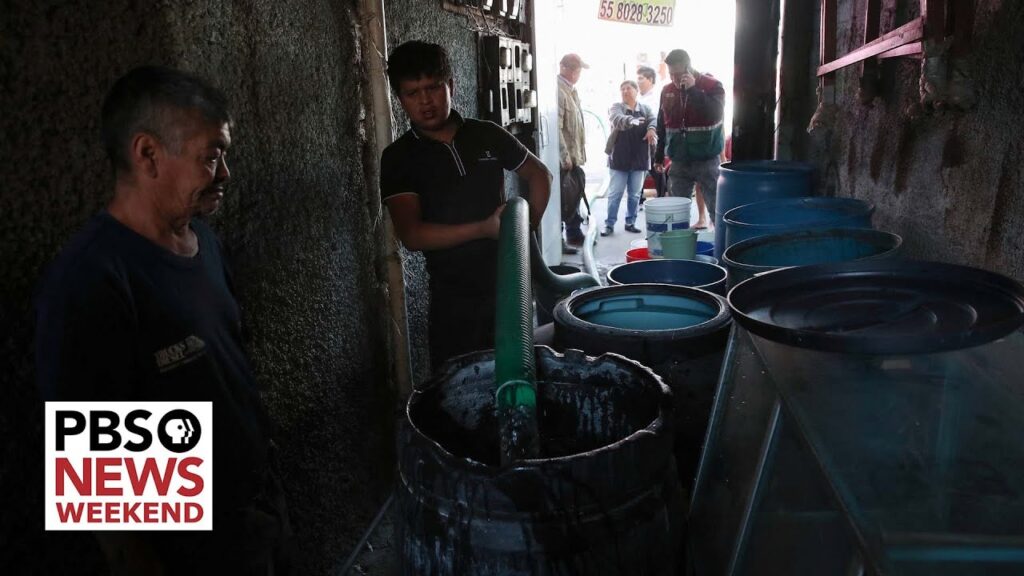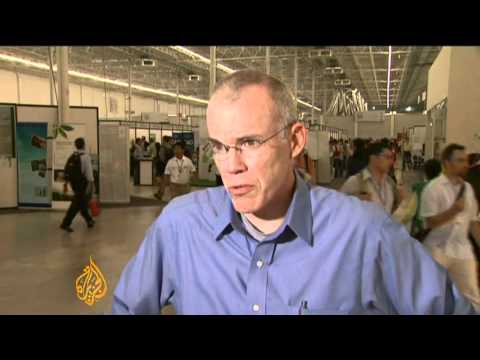Understanding Mexico City’s Water Crisis
Mexico City, a sprawling urban expanse, is facing a serious water crisis. This is not only due to its rapidly growing population but also because of its unique geographical location. The city is built on an ancient lake bed, which complicates its water supply and drainage systems. As a result, residents are experiencing water scarcity, with some neighborhoods having access to running water for only a few hours a week.
The water crisis in Mexico City is exacerbated by its aging infrastructure. Many of the city’s pipes are over 50 years old and in dire need of repair. This leads to significant water loss through leaks, with estimates suggesting that up to 40% of water is lost before it even reaches households. The combination of insufficient infrastructure and high demand has put an unprecedented strain on the city’s water resources.
Another critical issue is the overexploitation of the city’s aquifers. Mexico City draws a significant amount of its water from these underground reservoirs. However, the rate at which water is being extracted far exceeds the aquifers’ natural replenishment rates. This unsustainable practice has led to subsidence, causing the city to sink by up to 12 inches a year in some areas. The sinking exacerbates the risk of flooding during the rainy season and further damages the water distribution infrastructure.
Efforts to address this crisis have included government initiatives aimed at repairing and upgrading the water distribution system. Rainwater harvesting and the reuse of wastewater are also being promoted as viable solutions to mitigate the water scarcity. Moreover, there is a growing awareness among the population about the importance of water conservation and the need for sustainable water management practices.
Despite these efforts, the challenges remain formidable. Mexico City’s water crisis is a complex issue interwoven with climate change, urban development, and socio-economic factors. As the city looks towards solutions, it must balance the immediate needs of its residents with long-term sustainability to ensure a secure water future for all.
Is Mexico City Running Out of Water?
Mexico City, a sprawling urban expanse, stands as one of the largest cities in the world. As it continues to grow, a pressing concern has emerged regarding its water sustainability. For years, the capital has been grappling with water shortage issues, a problem exacerbated by its geographical location and heavy reliance on a finite supply of groundwater. The city’s situation is indeed alarming, with significant parts of the population facing daily challenges in accessing clean, potable water.
The underlying causes of Mexico City’s water predicaments are multifaceted. Firstly, the city was built on an ancient lake bed, leading to a sinking city phenomenon that complicates the extraction of groundwater and damages the water infrastructure. This continuous sinking damages pipelines and sewer systems, leading to leaks and loss of water before it can reach households. Additionally, the city’s rapid population growth and urban expansion have outpaced the development of sustainable water management practices. Climate change also plays a critical role, with altered precipitation patterns causing longer droughts and affecting recharge rates of aquifers.
Efforts to address the water scarcity in Mexico City are underway, but challenges persist. Innovations in rainwater harvesting and wastewater recycling are being explored as potential solutions to alleviate the city’s water stress. Government and non-profit organizations are working towards improving the efficiency of water distribution systems and promoting water conservation among the populace. However, these efforts need to be significantly scaled up to ensure that Mexico City can meet the water demands of its residents today and in the future. The city’s struggle with water scarcity serves as a poignant reminder of the critical need for sustainable urban planning and the proactive management of natural resources.
Impact on Tourism and Adventure
Mexico’s Landscape as an Adventurer’s Playground is undeniable. The sheer diversity of Mexico’s terrain – ranging from stunning coastlines to rugged mountains, and dense jungles – positions it as a prime destination for adventure tourism. This variety not only attracts thrill-seekers and nature lovers from all corners of the globe but also promotes a direct engagement with the natural and cultural richness of the country. Activities like snorkeling in the Riviera Maya, hiking in the Copper Canyon, or exploring the ancient Mayan ruins of Chichen Itza allow tourists to experience Mexico’s beauty and historical depth firsthand, contributing significantly to the country’s tourism appeal.
The Growth of Eco-Friendly Adventure Experiences reflects an evolving industry that is becoming increasingly conscientious about its environmental impact. In response to a growing demand for sustainable travel options, many Mexican adventure tourism operators are adopting eco-friendly practices. By offering experiences such as eco-camping in Baja California, sustainable whale watching in Guerrero, or bird-watching tours in the Yucatan Peninsula, these operators are demonstrating that adventure tourism can be both thrilling and responsible. This shift not only caters to the preferences of environmentally-minded travelers but also ensures the long-term preservation of Mexico’s natural wonders for future generations.
Local Communities and Cultural Immersion add a unique and enriching layer to the adventure tourism experience in Mexico. Many adventure tours now incorporate elements of cultural immersion, allowing tourists to engage directly with local communities. This interaction provides a deeper understanding and appreciation of Mexico’s rich cultural heritage, from indigenous rituals and traditional cuisine to local handicrafts and festivals. Moreover, this form of tourism often contributes to local economies, creating new opportunities for residents and promoting cultural preservation. Such experiences underscore the broader impact of adventure tourism on both visitors and host communities, highlighting its role in fostering cultural exchange and mutual respect.
Adventure Tourism as an Economic Catalyst is a testament to its significant role in Mexico’s tourism sector. The demand for adventure experiences drives substantial investment in local infrastructure and services, from accommodation and transport to guide services and safety measures. This not only enhances the overall quality of the tourism offering but also stimulates economic development in areas that might otherwise be overlooked. The creation of jobs, from guides and instructors to hospitality staff, further amplifies the positive economic impact, illustrating how adventure tourism in Mexico is not just about seeking thrills but also about driving meaningful growth and opportunity within the country.
Sustainable Solutions and Future Outlook
In the rapidly evolving sector of travel and adventure in Mexico, sustainability has risen to the forefront of priorities, recognizing the inherent value of protecting the natural and cultural environments that make these experiences so unique. Sustainable solutions focus on minimizing environmental impact while enhancing socio-economic benefits for local communities. One approach gaining momentum is the implementation of eco-friendly accommodations and services, such as eco-lodges and sustainable adventure tours. These not only offer a greener alternative but also immerse travelers in local conservation efforts, offering them a firsthand experience of sustainable living.
Further, community-based tourism has emerged as a pivotal aspect of sustainable travel in Mexico. This model empowers local populations by involving them directly in tourism activities, ensuring that the benefits of tourism are equitably distributed. By participating in heritage and conservation projects, visitors contribute to the preservation of cultural and natural assets, while also fostering economic growth in local communities. This approach not only enriches the visitor’s experience but also instills a sense of pride and stewardship within the community.
Technological advancements also play a critical role in shaping the future of sustainable travel in Mexico. Innovations in clean energy, waste management, and water conservation are being integrated into travel and adventure operations, reducing the ecological footprint of tourism. Digital platforms for eco-tourism are on the rise, offering travelers the tools to make informed choices about their travel impact. These technologies not only support sustainable practices but also enhance the overall experience for adventurers by providing alternative routes and off-the-beaten-path destinations that are less frequented and, by extension, less impacted.
Looking ahead, the future of travel and adventure in Mexico hinges on a collective commitment to sustainability. Stakeholders across the industry are increasingly recognizing their role in fostering an environmentally responsible and culturally respectful tourism industry. With the continued development of sustainable tourism standards and certifications, there is a clear path forward to ensuring that Mexico’s adventures remain vibrant and accessible for generations to come, all while preserving the very essence that makes them extraordinary.


